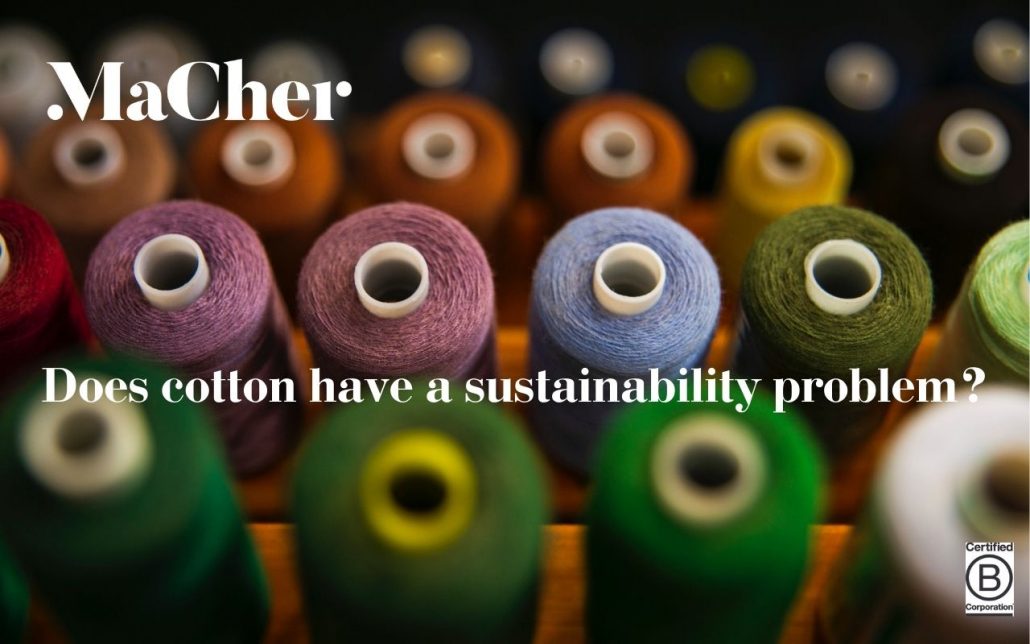As a responsible business, how do we navigate buying fibres and materials fairly when some of our sourcing tools, like certified supply chains and industry data, turn out to be inaccurate?
Jennifer Krischer, MaCher’s expert on product development and circular innovation shares her view on cotton.
Misinformation, fraud and statistics
At MaCher, I like to call myself the resident materials nut. I am obsessed with the topic, but am not an academic subject matter expert. I’m passionate about textiles and innovative materials, material impacts, and best practices.
I recently gave a presentation to the company about the cotton industry. In my presentation I commented on statistics, best practices, and where I thought the cotton industry was going. I shared my admiration for the transparency of the organic cotton supply chain and the regenerative cotton farming techniques employed by organizations like The Oshadi Collective in collaboration with brands like Christy Dawn.
Shortly after my presentation, this study from The Transformers Foundation then came out highlighting the rampant misinformation about the cotton industry. Many of the statistics shared by reputable sources (and some I quoted in my presentation) turned out to be regional instead of global, or entirely inaccurate.
I was discouraged. I felt though that the future of sustainable cotton must be transparent supply chains, traceable fibers, and organic/regenerative practices.
Then this article from the New York Times came out, shedding light on the fraud and corruption in the organic cotton supply chain in India.
The increase in demand for organic cotton drives the corruption in India. Despite the high demand however, yields for organic cotton are lower than conventional cotton. The return on investment for organic farming is often poor in India. This news was yet another blow to the transparency within cotton supply chains. It also followed on the heels of the news of human rights violations against the Uyghur community in Xinjiang, China.
Start by controlling what we can
As a responsible business, how do we navigate these issues when some of our sourcing tools, like certified supply chains and industry data, turn out to be inaccurate?
Our answer is to start by controlling what we can. At the same time, we are trying to understand the “why” of what we can’t control.
We can control what we purchase. MaCher set a target that by 2025, 100% of the cotton goods we make in China will only be recycled or organic cotton. This eliminates fibers from the forced labor in Xinjiang. This will help ensure our cotton supply chain in China is conflict free. We have already met our first milestone of 25% of our products to meet this standard within the first 12 months of the policy. In India we will continue to source conventional, recycled, and organic cotton. The issues within the organic cotton supply chain in India are complex. We want to support the people who work in and are financially supported by it.
Cotton is not off limits
Cotton is not off limits. It still has a place in our products. As a plant-based fiber it provides functional benefits in manufacturing, product performance, maintenance and end of life. Our role is to understand the supply chain in as much detail as possible. We also need to source materials as responsibly as we can to avoid known human rights violations.
Opening our eyes to these challenges pushes us to be even more diligent with our supply chain and give our clients confidence in the products we provide.
MaCher has been working to use better materials for a long time. Transparency and ethics in our supply chain is a continuous journey. We are committed to developing our understanding and sharing our experiences along the way.
MaCher– Make Better Things to Make Things Better


